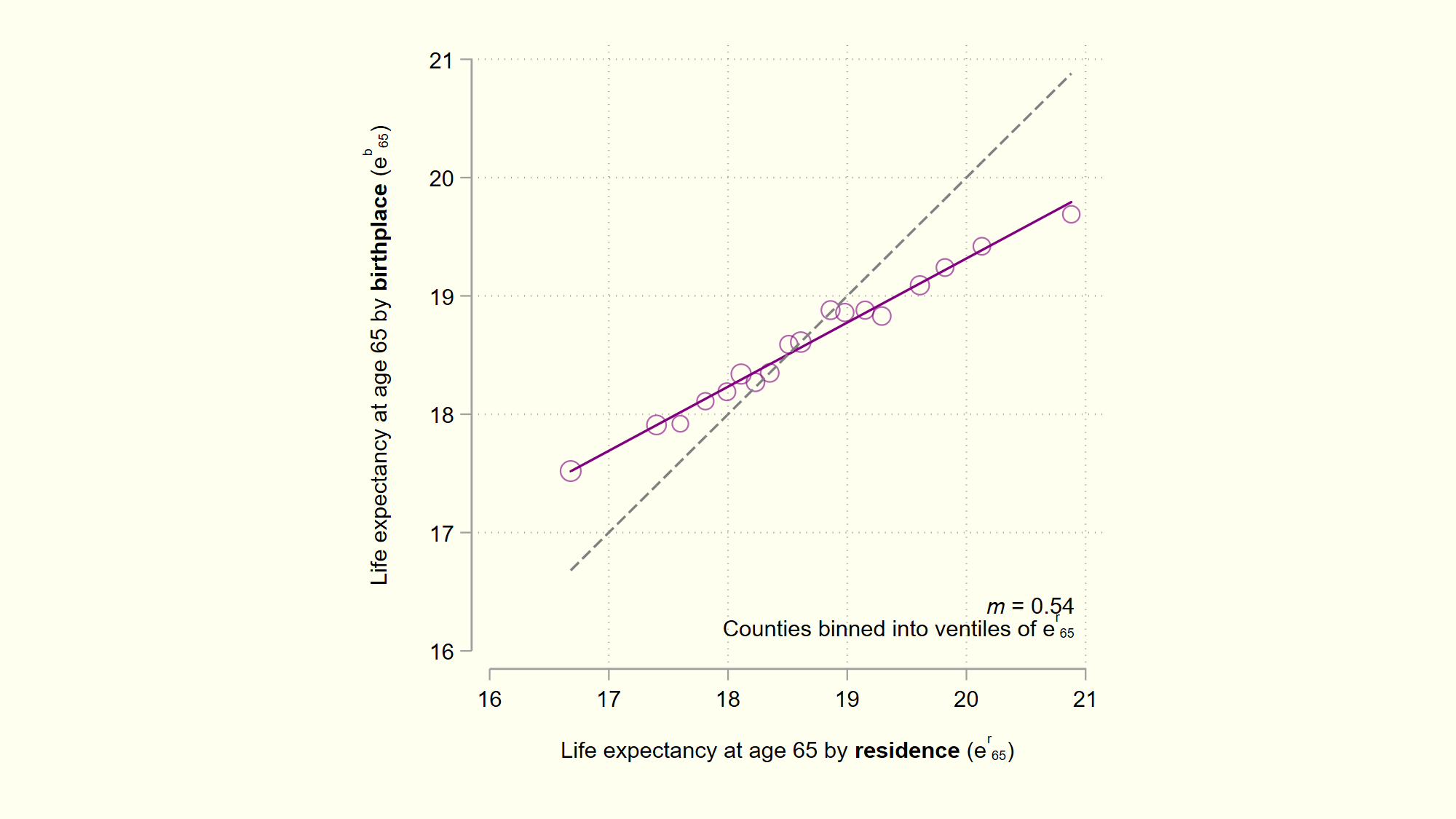Above: I compare two versions of life expectancy at age 65, one that defines counties by people who reside there (as is standard) and one that defines counties instead by people who were born there (a novel measure). By birth, counties are much more similar to one another.
Working paper coming soon
Abstract
Life expectancy in the United States varies widely by geography: The gap between the top and bottom-ranking counties is over twenty years (Dwyer-Lindgren et al., 2017). These disparities are often viewed as maps of deprivation, but they are based on where people die, a location that reflects deprivation as well as sorting. This paper provides the first county-level estimates of life expectancy based instead on where people were born. The results show that counties are much more similar when defined by who is born there rather than who dies there. As I show, this is driven partially by the locations chosen by immigrants, who are generally much healthier than the native-born population, but more so by the "health-selective" migration of the native-born population, which is highly mobile over the life course. As I show, nearly three quarters of Americans over the age of 65 live in a county distinct from the one in which they were born. Examining the observable characteristics of the parents of this demographic (by linking death certificates and new Census data to old Census data), I also show that those who migrate internally come from families of higher socioeconomic status. Life expectancy in origin and destination counties are only weakly positively correlated, but, again, such movements are so common that they significantly alter the landscape of longevity in the United States.
Disclaimer: Any views expressed are those of the authors and not those of the U.S. Census Bureau. The Census Bureau's Disclosure Review Board and Disclosure Avoidance Officers have reviewed this information product for unauthorized disclosure of confidential information and have approved the disclosure avoidance practices applied to this release. This research was performed at a Federal Statistical Research Data Center under FSRDC Project Number 2603. (CBDRB-FY21-P2603-R9186)

